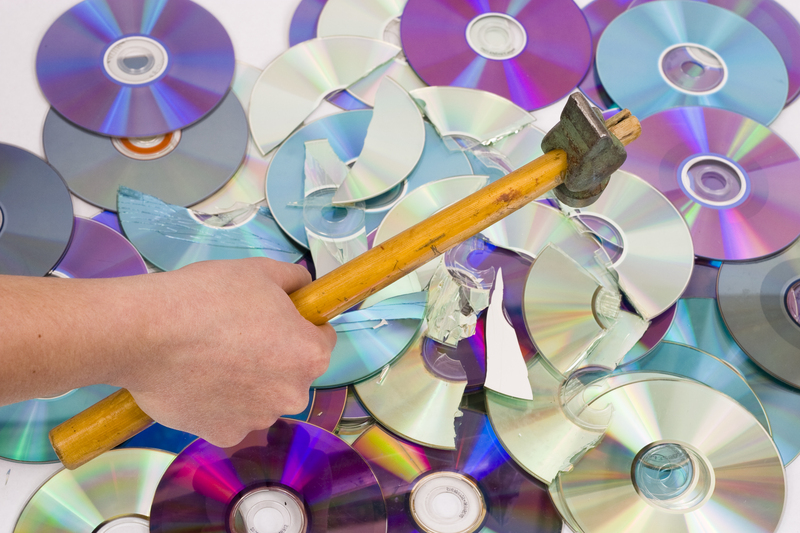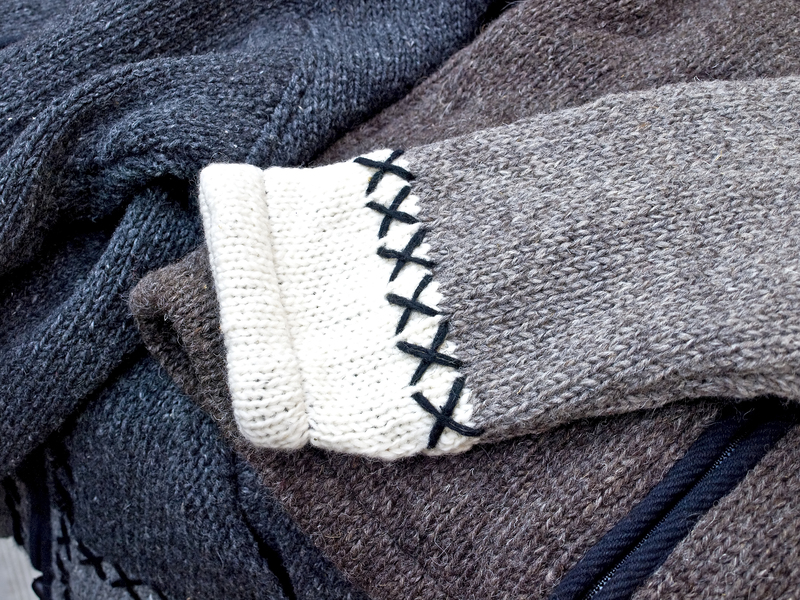Step-by-Step Guide to Disposing of Pots and Pans Sustainably
We all need cookware like pots and pans, but what happens when they are worn out or no longer suit your kitchen needs? Instead of simply tossing them out, it's important to consider eco-friendly options that extend the life of your old cookware or ensure it's disposed of responsibly. This comprehensive guide will walk you through how to dispose of pots and pans sustainably, helping you make a positive impact on the environment--and maybe even your community.
Why Sustainable Pot and Pan Disposal Matters
Before looking at disposal methods, it's essential to understand why sustainable disposal of cookware is important:
- Reduction of landfill waste: Most pots and pans contain metal or non-biodegradable coatings, which can take hundreds of years to break down in landfills.
- Resource recovery: Metals can be recycled and used to make new products, preventing the need for new mining and conserving resources.
- Hazard minimization: Some nonstick coatings and plastic handles can release harmful substances during decomposition or incineration.
- Support for community initiatives: Donating still-usable cookware can help those in need and reduce waste.

What Materials Are Your Pots and Pans Made Of?
First, identify the materials your pots, pans, and other cookware are made from. Common materials include:
- Stainless steel
- Cast iron
- Aluminum
- Copper
- Nonstick (Teflon or ceramic coated)
- Enamel-coated cookware
Why does this matter? Certain recycling facilities or donation centers only accept specific materials, and knowing what you have ensures the pots or pans end up recycled properly.
Step 1: Assess the Condition of Your Cookware
- If your pots and pans are still in good condition:
- Consider donating, selling, or even upcycling them.
- If your cookware is unusable (damaged, warped, or has broken handles):
- Research recycling and waste options for damaged metal goods in your area.
Pro tip: "One person's trash is another person's treasure." If your cookware is still usable but you simply no longer want it, donating is almost always the most sustainable solution.
Step 2: Explore Reuse and Donation Options
1. Donate to Charities or Thrift Stores
Many local charities, thrift shops, and shelters eagerly accept usable kitchenware. Organizations like Goodwill, Salvation Army, and community kitchens can benefit greatly from donated pots and pans.
- Make sure your pots and pans are clean and in reasonable condition.
- Call ahead to ensure the organization accepts cookware donations.
- Drop off your items during staffed hours.
2. Participate in Local "Buy Nothing" Groups
Neighborhood online platforms like Facebook's "Buy Nothing" groups or Freecycle are excellent places to list gently used pots and pans for free pickup, reducing local waste and helping your neighbors.
3. Host a Swap Party
Invite friends or family to a kitchenware exchange. Someone else may be thrilled with cookware you no longer use, helping extend the life of your pots and pans.
4. Upcycle Old Cookware
Get creative! Old pots and pans can be repurposed as:
- Planters for houseplants or herbs
- Organizers for utensils or tools
- Decorative wall art in your kitchen or garden
- Bake sales or children's art projects
Step 3: Responsible Recycling of Pots and Pans
1. Check Local Recycling Programs
Most pots and pans, especially those made of metal, can be recycled, but curbside recycling may not accept them due to size or composition. Here's what you should do:
- Visit your city or county's official recycling website for guidelines specific to metal cookware recycling.
- Ask if they have bulk metal drop-off days or a scrap metal bin at your local recycling center.
- Remove any non-metal elements, such as plastic handles or glass lids, if possible, as they often need to be disposed of separately.
2. Take to a Scrap Metal Recycler
If municipal programs won't accept your old cookware, dedicated scrap metal recyclers usually do. This is one of the best sustainable pan disposal methods:
- Gather your pots and pans, ensuring they're mostly metal.
- Search for "scrap metal recycling center near me" online.
- Follow the center's requirements (some ask for separated metals or removal of non-metallic parts).
Recyclers may even pay you a small amount for certain metals like copper, aluminum, or stainless steel.
3. Mail-In Cookware Recycling Programs
Some companies offer mail-in recycling for old cookware. Notable programs include:
- TerraCycle: Offers paid services for hard-to-recycle items, including nonstick pans.
- GreenPan: Occasionally runs recycling programs through their website for their own cookware.
Note: While these services can have a small fee, they are ideal if local recycling is not available or your item is made of a difficult-to-recycle material.
Step 4: Safe Disposal of Nonstick and Specialty Coatings
Nonstick pans (Teflon-coated, ceramic, or enamel) require extra care for sustainable disposal because:
- If the coating is damaged, it can release toxins.
- Many facilities do not accept nonstick cookware due to chemical treatments and layered materials.
How to Dispose of Nonstick Pans Sustainably
- Contact your local recycling center first--many now accept nonstick cookware as landfill bans on these materials widen.
- If not accepted:
- Look for specialized recycling events in your area for hard-to-recycle items.
- Use a mail-in cookware recycling program.
- As a last resort, wrap and dispose of nonstick cookware in regular trash following local safety guidelines.
Step 5: Upcycling Ideas for Old Pots and Pans
Want to go beyond recycling? Upcycling extends the lifespan of your cookware by repurposing creatively.
- Garden Planter: Drill drainage holes in the bottom, fill with soil, and use as a pot for flowers or herbs.
- Bird Feeder: Attaching string to an old skillet creates a unique backyard feeder.
- Kitchen Organizer: Hang vintage pans on a wall for utensils or as a magnetic spice rack.
- Wall Art or Clocks: Paint or decorate surfaces for a rustic decor piece or turn a worn pan into a ticking kitchen clock.
- Storage Container: Use large pots to store cleaning supplies, toys, or craft items.
These creative uses not only keep pots and pans out of the landfill but can also add charm and function to your home or garden.
Step 6: Reduce, Reuse, and Rethink Cookware Purchases
The most sustainable way to dispose of pots and pans is to buy durable, long-lasting cookware in the first place. Make eco-friendly kitchen decisions such as:
- Investing in quality stainless steel, cast iron, or copper pots and pans that last for decades.
- Choosing brands with take-back or recycling programs.
- Repairing instead of replacing: Tighten handles, reseason cast iron, or fix loose rivets to extend their lifespan.
- Supporting cookware companies with strong environmental commitments.

FAQs About Sustainable Pot and Pan Disposal
Q: Can I put old pots and pans in my curbside recycling?
Usually not. Most curbside programs can't process large metal items due to machinery limitations. Check with your local recycling center or use a scrap metal facility.
Q: What types of pots and pans are easiest to recycle?
Uncoated stainless steel, aluminum, and cast iron are accepted at almost every scrap metal recycling facility. Nonstick or coated pans are more complicated but some centers do accept them if the non-metal parts are removed.
Q: Is there a way to recycle broken glass lids?
No--for most municipalities, broken tempered glass from cookware is not recyclable and should be disposed of in regular trash wrapped securely to avoid injury. Check with your local recycling program to confirm.
Q: What about pans with wooden or plastic handles?
Remove these parts before recycling. Most recycling centers only accept the metal portion. Handles can usually be disposed of in general waste unless your area has separate plastic or wood recycling options.
Final Thoughts on Disposing of Pots and Pans Sustainably
By following this step-by-step guide, you'll ensure your old pots and pans are disposed of sustainably--saving precious resources and minimizing harmful waste. From donating to local charities, upcycling for creative uses, or responsibly recycling metals and coatings, every responsible action counts toward a healthier planet.
Remember: Reduce, reuse, recycle, and rethink--your sustainable kitchen begins not only with how you cook but also with how you say goodbye to your cookware!
Ready to clean out your kitchen cupboards? Make sustainable choices for your old pots and pans and inspire others in your community to do the same.
- Donate to those in need
- Recycle whenever possible
- Upcycle for creativity and sustainability
- Choose wisely for your next cookware purchase
Together, we can ensure that kitchen waste becomes a thing of the past--and sustainable pot and pan disposal becomes our new norm.
